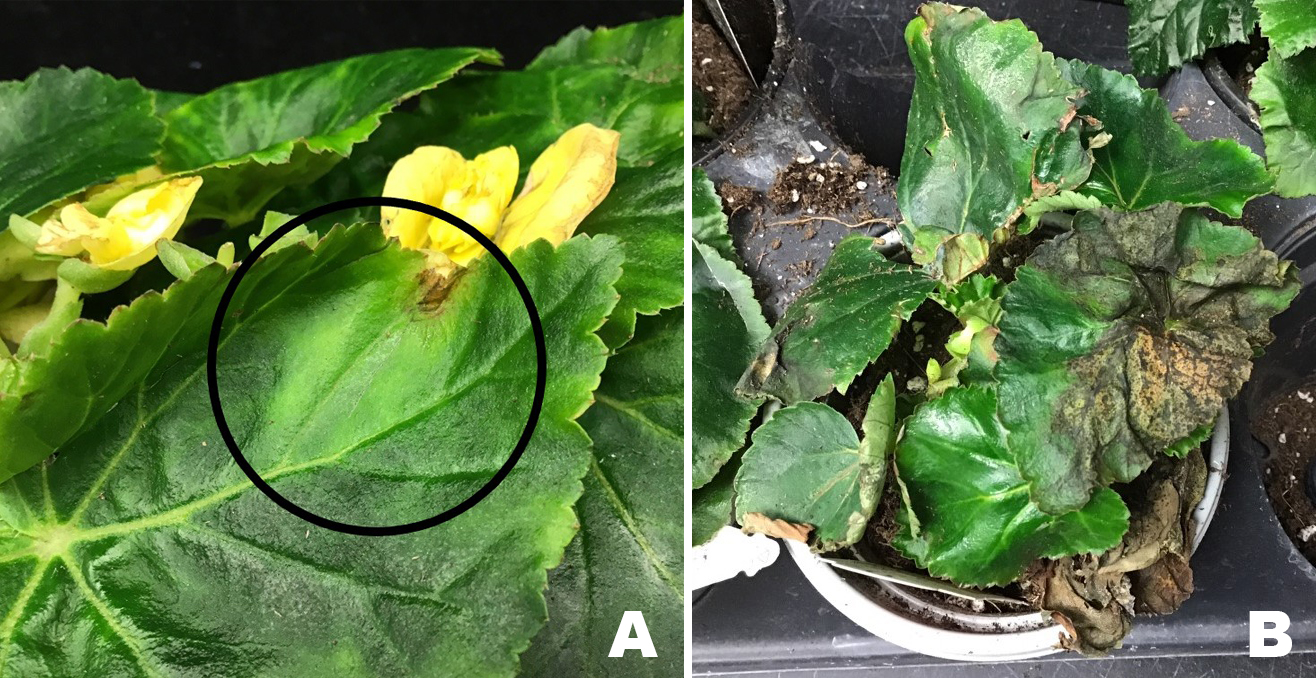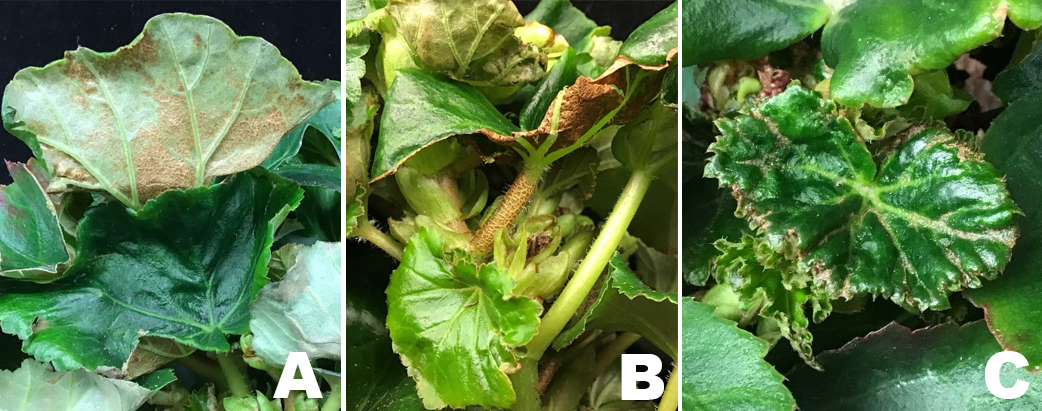Be familiar with common problems on Rieger begonias
Scout for symptoms of some common pathogens and pests of begonia.

There are several different but somewhat common problems on Rieger begonia. The three issues we see most often on begonias submitted to Michigan State University Plant & Pest Diagnostics are impatiens necrotic spot virus, bacterial blight (Xanthomonas axonopodis pv. begonia) and broad mites. Each of these is caused by a pest or pathogen with specific management strategies. It is important to be familiar with the symptoms of each; early detection and action can prevent further losses.
Impatiens necrotic spot virus (INSV)
Symptoms of INSV vary widely depending on the host. In begonias, the symptoms typically include ringspots on the foliage. Rings may begin as a yellow area but over time this tissue dies, leaving a necrotic outline. These rings may be incomplete circles but still have defined margins.
This virus has a wide host range and is vectored by thrips. Quick action is needed to prevent further spread throughout the production area. Diagnostic test kits are available for use in the greenhouse and these provide quick results. Samples can also be sent to Michigan State University Plant & Pest Diagnostics for testing.
Bacterial blight (Xanthomonas axonopodis pv. begonia)
Symptoms of this disease typically begin at the leaf margin. Wedge-shaped chlorotic areas are an initial symptom, but this discoloration is subtle and easily overlooked (Figure 2A). Symptoms often aren’t noticed until necrosis begins at the leaf margin. Over time, disease progresses and older leaves toward the bottom of the plant may completely collapse while younger leaves have more characteristic symptoms (Figure 2B). This pathogen is specific to begonia and, fortunately, will not spread to other ornamental crops. Refer to the MSU Extension article series, “Essential concepts for managing Xanthomonas in begonia — Part 1,” published in 2018 for more information on the biology and management of this pathogen.

Broad mites
Begonias infested with broad mites have foliage with a coppery discoloration visible on the underside of the leaf (Figure 3A and B), blossoms can also be damaged. New growth may be distorted in both texture and shape (Figure 3B). Overall, plants that are damaged by the toxic saliva become unthifty. Broad mites are almost microscopic and may be difficult to see even with a hand lens. More information about broad mites can be found at “Broad mites in ornamental crops — Part 1: Challenges and treatments” from MSU Extension.




 Print
Print Email
Email


